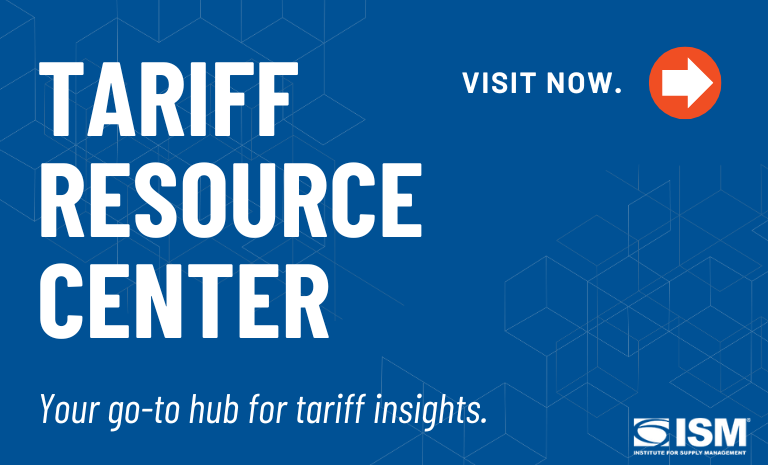Supply Chain News Roundup: Employ ‘Plasticity’ to Respond Ahead of Disruption

Move over, resilience: Plasticity may well be the new buzzword supply management organizations need to concentrate on to have healthy supply chains amid tariffs and economic uncertainty.
According to researchers at Florida Atlantic University (FAU), Rochester Institute of Technology (RIT) and Texas Christian University (TCU), plasticity is the ability to respond ahead of unknown threats. “Rather than focus on resilience or adaptability, supply chain plasticity takes it a step further by redesigning structures and networks to better adapt to disruptions and unplanned shifts,” according to a press release.
“The whole goal is to withstand the next disruption better rather than scrambling to come back from it,” Steven Carnovale, Ph.D., associate professor of supply chain management in FAU’s College of Business, said in the release. “Whether that is how firms design the structure of the supply network, where they curate sourcing arrangements, or where they put production facilities, it’s about firms utilizing their strengths proactively before the next emergency.”
Plasticity against tariff backlash and unexpected events will work best when three factors are employed, said Carnovale, who along with Laharish Guntuka, Ph.D., assistant professor at RIT, and Ellie Falcone, Ph.D., assistant professor at TCU, published “Supply Chain Plasticity: A Responsive Network Capability to Ensure Resilience,” in the Journal of Business Logistics.
The factors are: (1) bridging gaps between various companies, (2) clustering coefficients, or connecting regional supply bases and (3) centrality — ensuring the organization is connected to the others in a network.
An example of plasticity: diversifying the supply chain network, the researchers said.
“Firms and businesses that are applying solid supply chain practices ahead of possible disruptions will not be as impacted by disruptions to the global supply chain,” Carnovale said. “By doing this, consumers are likely to have continued access to goods.”
Going the Last Mile for Younger Customers
Last-mile delivery companies should take heed: Descartes Systems’ latest e-commerce survey found that nearly 80 percent of younger buyers — the ones driving online buying growth — are experiencing delivery issues.
“The bottom-line impact of negative delivery experiences remains a pressing concern for retailers and their delivery partners, especially with the pace of e-commerce growth steadying post-pandemic,” Mavi Silveira, senior vice president of global marketing at Descartes, said in a press release. “While small improvements in home-delivery performance have been made over the past few years, they’re not currently reflecting the quality experience consumers are demanding, especially the valuable under-35 cohort, as poor delivery experiences risks the potential lifetime customer value of this demographic.”
For consumers of ages 18-35, according to How Smarter Home Delivery Wins Younger Consumers as Online Buying Slows, the most common delivery issues include:
- Late delivery, 26 percent (22 percent average among all e-commerce buyers)
- The delivery arrived at a different time than expected, 25 percent (20 percent)
- The delivery time offered was longer than desired, 23 percent (17 percent)
- The package was left in an unsecure location, 19 percent (17 percent)
- The package was damaged, 22 percent (16 percent).
Among other findings, among ages 18-35, 43 percent say their online buying has increased, and 44 percent say they made online purchases at least every two weeks, an increase over last year’s 33 percent.
For the survey, Descartes and SAPIO Research surveyed 8,000 consumers in North America and Europe about their online buying behavior during the first three months of 2025.

